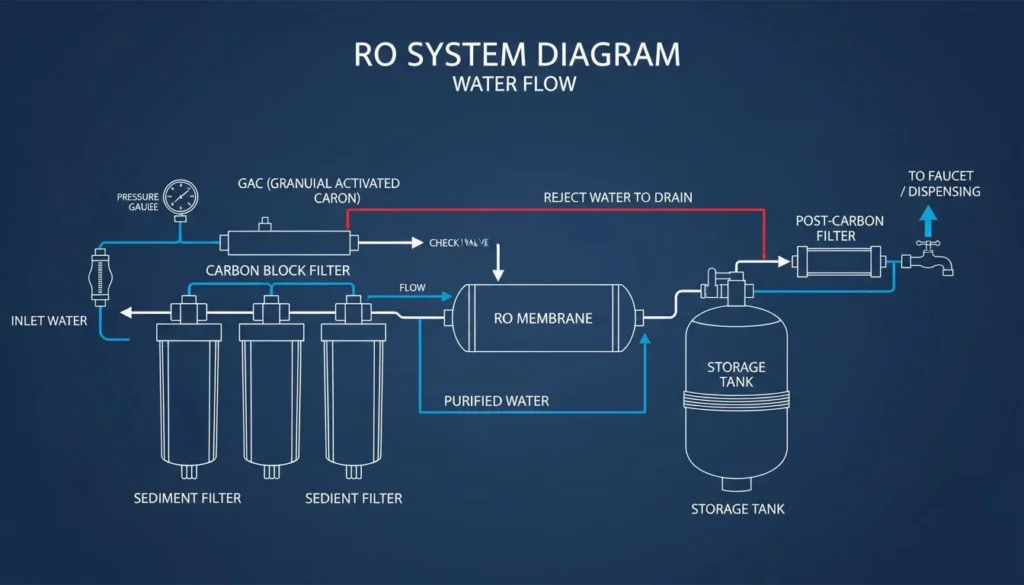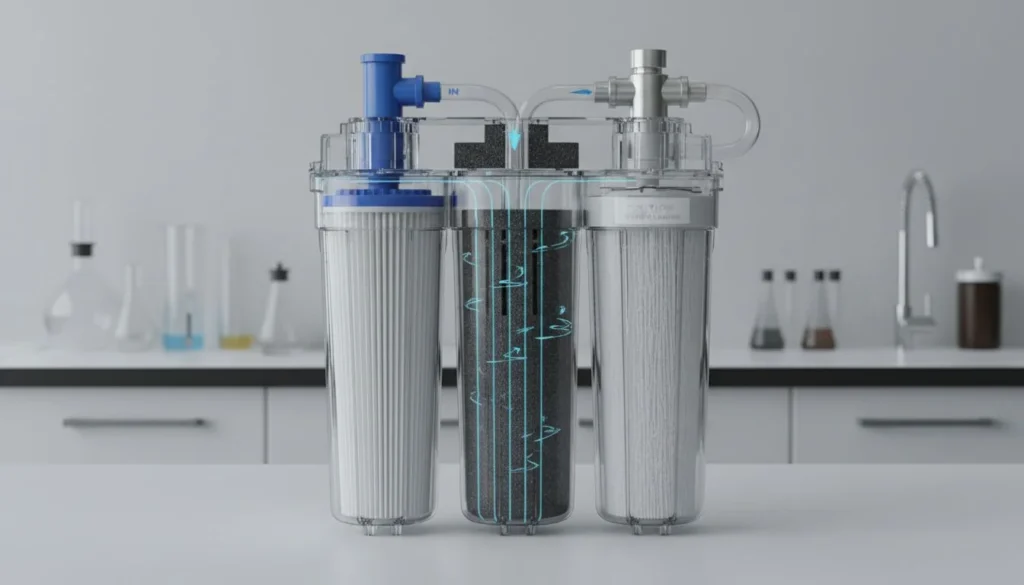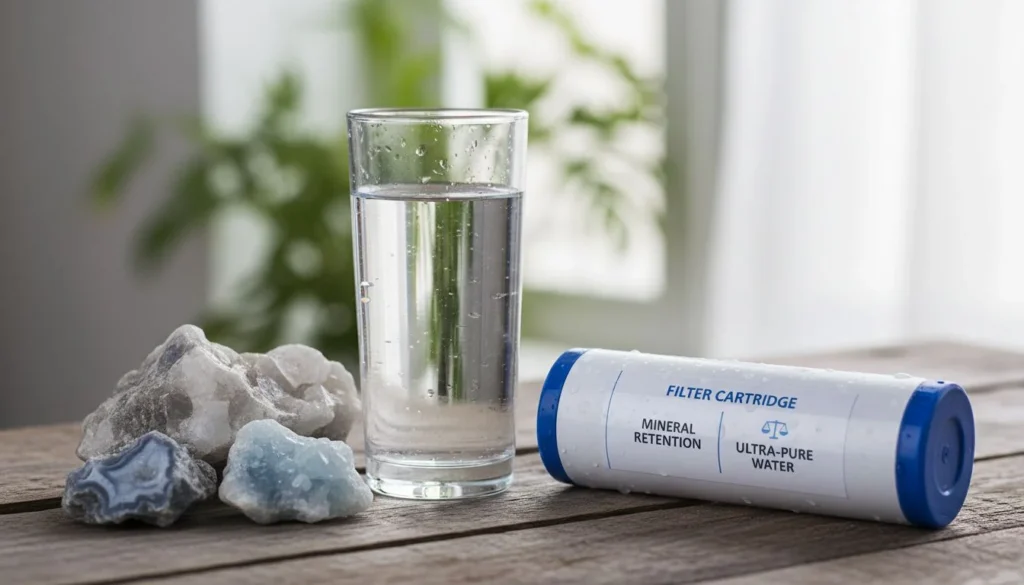
لم يكن التنفس بسهولة في المنزل أكثر أهمية من أي وقت مضى، خاصةً مع تحول جودة الهواء إلى موضوع ساخن. مع وجود خيارات مثل أجهزة تنقية الهواء أو ترقيات أجهزة التدفئة والتهوية وتكييف الهواء، قد يكون من الصعب تحديد الأفضل للحفاظ على نظافة الهواء.
غالبًا ما تكون أجهزة تنقية الهواء أكثر فعالية من أنظمة التدفئة والتهوية وتكييف الهواء التقليدية في إزالة الجسيمات الصغيرة والمواد المسببة للحساسية من الهواء، وذلك بفضل كفاءتها العالية HEPA الفلاتر. بينما تتحكم أنظمة التدفئة والتهوية وتكييف الهواء في درجة الحرارة والرطوبة للمنزل بأكمله، تركز أجهزة تنقية الهواء على غرف محددة، وتلتقط 99.971 تيرابايت في الثالثة من الجسيمات الصغيرة جدًا التي تصل إلى 0.3 ميكرون.
أتذكر عندما كانت الحساسية تدفعني إلى الجنون، كنت أشعر وكأنني أحارب أعداء غير مرئيين داخل منزلي. عندها بدأت أبحث في أجهزة تنقية الهواء وأنظمة التدفئة والتهوية وتكييف الهواء. وإليك ما وجدته: في حين أن أجهزة تنقية الهواء تتفوق في استهداف مناطق محددة بقدراتها المتقدمة في الترشيح، فإن أنظمة التدفئة والتهوية وتكييف الهواء هي العمود الفقري لراحة المنزل بالكامل، حيث تتحكم في درجة الحرارة والرطوبة. من الضروري الموازنة بين التكاليف ومعايير الامتثال وحتى الاتجاهات التقنية القادمة في هذا القرار.
أوصلني استكشاف هذه الخيارات إلى مفترق طرق بين التطبيق العملي والراحة. عادةً ما تكون أجهزة تنقية الهواء ميسورة التكلفة ومتوفرة بسهولة عبر الإنترنت، مما يجعلها خياراً جذاباً للراحة الفورية. وفي الوقت نفسه، يمكن أن تكون ترقية نظام التدفئة والتهوية وتكييف الهواء استثماراً باهظاً ولكنه يندمج بسلاسة في هيكل المنزل أو المكتب. بعد جائحة كوفيد-19، ارتفع الطلب على الهواء الداخلي الأنظف بشكل كبير، مما أدى إلى ابتكارات مثل التكامل الذكي بين تقنية تنقية الهواء وأنظمة التدفئة والتهوية وتكييف الهواء. قد يُحدث هذا الاتجاه ثورة في كيفية التعامل مع جودة الهواء الداخلي، حيث يمزج بين الذكاء الاصطناعي و إنترنت الأشياء لحلول أكثر ذكاءً
تُعد أجهزة تنقية الهواء أكثر فعالية من حيث التكلفة من أنظمة التدفئة والتهوية وتكييف الهواء.صحيح
يمكن شراء أجهزة تنقية الهواء عبر الإنترنت، بينما تتطلب أنظمة التدفئة والتهوية وتكييف الهواء تركيباً مكلفاً.
تستخدم أنظمة HVAC مرشحات HEPA مثل أجهزة تنقية الهواء.خطأ
عادةً ما تستخدم أنظمة التدفئة والتهوية وتكييف الهواء (HVAC) مرشحات MERV، وليس HEPA، والتي تكون أقل فعالية.
ما الذي يجعل أجهزة تنقية الهواء وأنظمة التدفئة والتهوية وتكييف الهواء (HVAC) مختلفة في الترشيح؟
هل تساءلت يومًا ما الذي يميز أجهزة تنقية الهواء عن أنظمة التدفئة والتهوية وتكييف الهواء؟ دعنا نتعمق في الأمر ونكتشف أسرار التنقية الفريدة من نوعها.
تتنوع أجهزة تنقية الهواء وأنظمة التدفئة والتهوية وتكييف الهواء (HVAC) بشكل كبير في براعة التنقية. أجهزة تنقية الهواء، وغالباً ما تكون مزودة بما يلي HEPA مرشحات تتفوق في احتجاز 99.97% من الجسيمات الصغيرة التي لا يتجاوز حجمها 0.3 ميكرون. في المقابل، تستخدم أنظمة التدفئة والتهوية وتكييف الهواء MERV-فلاتر مصنفة مع التركيز أكثر على الجسيمات الأكبر حجماً والحفاظ على التهوية العامة.
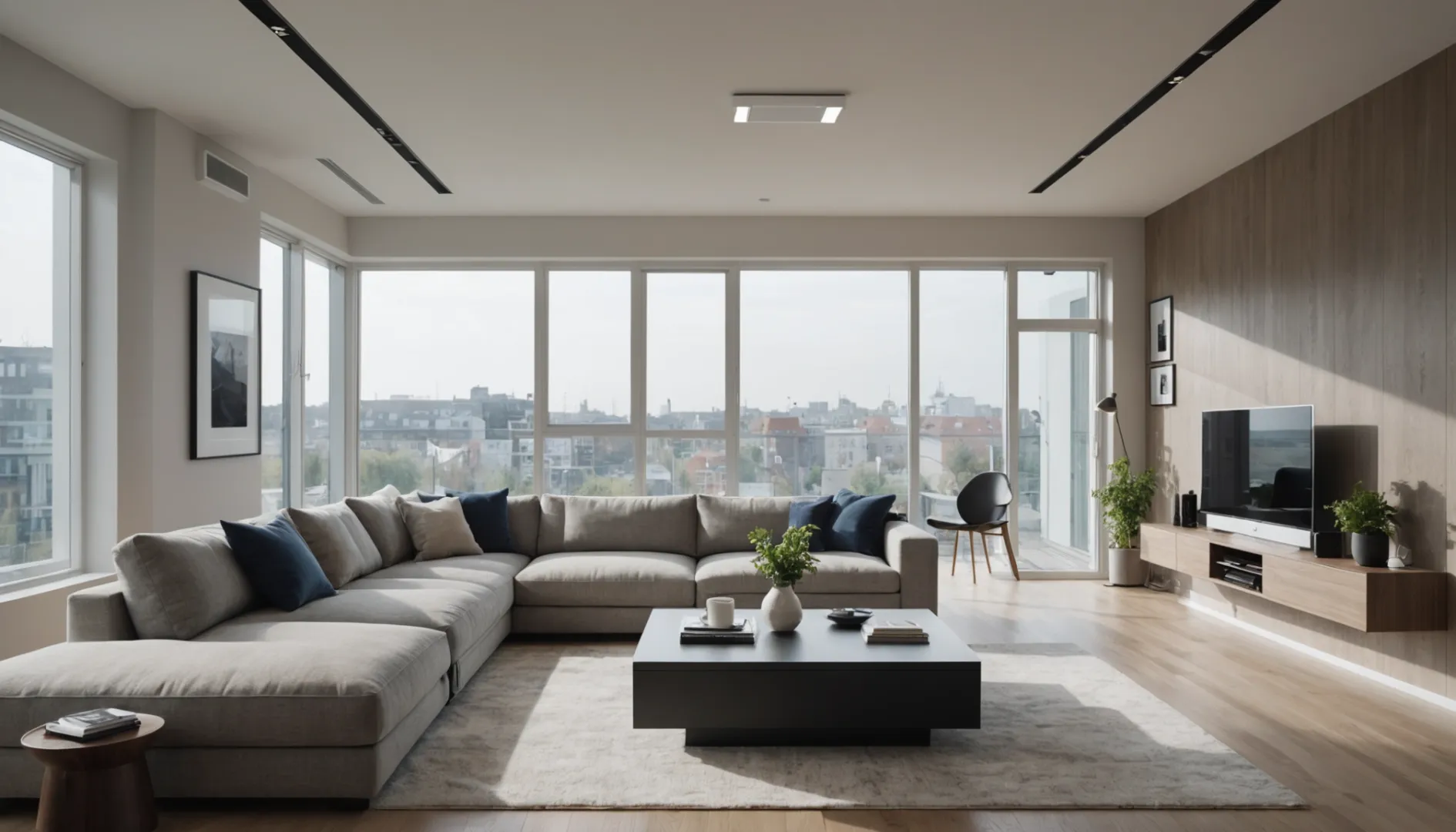
الفهم HEPA و MERV الفلاتر
أتذكر المرة الأولى التي قررت فيها معالجة مشكلة الغبار في شقتي. لقد اخترت جهاز تنقية الهواء لأن جهاز تنقية الهواء عالي الكفاءة (HEPA) وعدني الفلتر بالتقاط أصغر الجسيمات - مثل وبر الحيوانات الأليفة وحبوب اللقاح - التي كانت تسبب لي الحساسية. هذه HEPA تعتبر الفلاتر أعجوبة، حيث تلتقط جسيمات صغيرة تصل إلى 0.3 ميكرون بمعدل كفاءة 99.97%. من ناحية أخرى، عندما نظرت إلى نظام التدفئة والتهوية وتكييف الهواء في مبنانا، وجدت أنه يستخدم الحد الأدنى من قيمة الإبلاغ عن الكفاءة (MERV) المرشحات. وتتراوح هذه الفلاتر من MERV 1 إلى MERV 16، وعلى الرغم من أن الأرقام الأعلى تعني ترشيحاً أفضل، إلا أنها لا تضاهي دقة جهاز تنقية الهواء الموثوق به. اعرف المزيد عن HEPA الفلاتر1.
الدور في إدارة جودة الهواء
عندما أفكر في التحكم في جودة الهواء في منزلي، أرى أن أجهزة تنقية الهواء هي الخيار الأمثل لغرف معينة - خاصةً في الأماكن التي نقضي فيها معظم وقتنا، مثل غرفة المعيشة أو غرفة النوم. على النقيض من ذلك، فإن أنظمة التدفئة والتهوية وتكييف الهواء هي العمود الفقري للتحكم في مناخ منزلنا، حيث تنظم درجة الحرارة والرطوبة في جميع أنحاء المنزل. وهي تركز على تدفق الهواء بدلاً من الترشيح الدقيق، وهو أمر أساسي إذا كنت مثلي وتريد ضمان معالجة الجسيمات الصغيرة بفعالية. استكشف فوائد أنظمة التدفئة والتهوية وتكييف الهواء2.
اعتبارات التكلفة ومعايير الامتثال
كانت التكلفة بالتأكيد عاملاً مهماً بالنسبة لي. لقد وجدتُ أن أجهزة تنقية الهواء ميسورة التكلفة وسهلة الشراء عبر الإنترنت، خاصة من خلال منصات مثل Amazon. وهي تندرج تحت رابطة مصنعي الأجهزة المنزلية (AHAM)، مما منحني بعض راحة البال بشأن فعاليتها. ولكن عندما تحققت من خيارات نظام التدفئة والتهوية وتكييف الهواء، كان من الواضح أنها تتطلب تصميمًا وتركيبًا مخصصًا - وهو استثمار كبير! وهي تلتزم بالمعايير التي وضعتها الجمعية الأمريكية لمهندسي التدفئة والتبريد وتكييف الهواء (ASHRAE)، وهو أمر بالغ الأهمية للإنشاءات الجديدة. مع ازدياد وعي الناس بقضايا جودة الهواء بعد جائحة كوفيد-19، أصبح دمج تقنية تنقية الهواء في أنظمة التدفئة والتهوية وتكييف الهواء أكثر شيوعًا. اكتشف AHAM و ASHRAE المعايير3.
الاتجاهات المستقبلية في تقنيات الترشيح
لقد كان التحول في نظرتنا لجودة الهواء الداخلي مذهلاً منذ جائحة كوفيد-19. لقد رأيت ابتكارات مثل جهاز تنقية الهواء المحمول من Wellcube الذي يُحدث نقلة نوعية من خلال التكامل مع البنى التحتية للمباني الحالية. هذا النوع من التكنولوجيا يستفيد من الذكاء الاصطناعي و إنترنت الأشياء لتحسين كيفية إدارتنا لجودة الهواء بشكل كبير. يبدو المستقبل مشرقاً لأولئك الذين يريدون منا حلولاً أكثر ذكاءً للحفاظ على هواءنا الداخلي نظيفاً وصحياً. اطلع على آخر المستجدات في مجال تنقية الهواء4.
تُعد أجهزة تنقية الهواء أكثر فعالية من حيث التكلفة من أنظمة التدفئة والتهوية وتكييف الهواء.صحيح
أجهزة تنقية الهواء أرخص ثمناً ومتوفرة عبر الإنترنت، بينما تتطلب أنظمة التدفئة والتهوية وتكييف الهواء تركيباً مكلفاً.
تستخدم أنظمة HVAC مرشحات HEPA مثل أجهزة تنقية الهواء.خطأ
عادةً ما تستخدم أنظمة التدفئة والتهوية وتكييف الهواء (HVAC) مرشحات MERV، وليس HEPA، والتي تكون أقل فعالية.
ما هي اعتبارات التكلفة لأجهزة تنقية الهواء مقابل أنظمة التدفئة والتهوية وتكييف الهواء (HVAC)؟
قد يبدو لك الاختيار بين جهاز تنقية الهواء ونظام التدفئة والتهوية وتكييف الهواء مثل الاختيار بين سيارة سيدان موثوقة وسيارة دفع رباعي فاخرة. دعنا نتعمق في تكاليف وفوائد كل منهما للعثور على الأنسب لمنزلك.
عادةً ما تكون أجهزة تنقية الهواء أقل تكلفة مقدماً وأسهل في التركيب مقارنةً بأنظمة التدفئة والتهوية وتكييف الهواء. ومع ذلك، توفر أنظمة التدفئة والتهوية وتكييف الهواء تحسيناً شاملاً لجودة الهواء للمنزل بأكمله، وغالباً ما تتضمن تقنيات تنقية متقدمة، مما يؤثر على قيمتها على المدى الطويل.
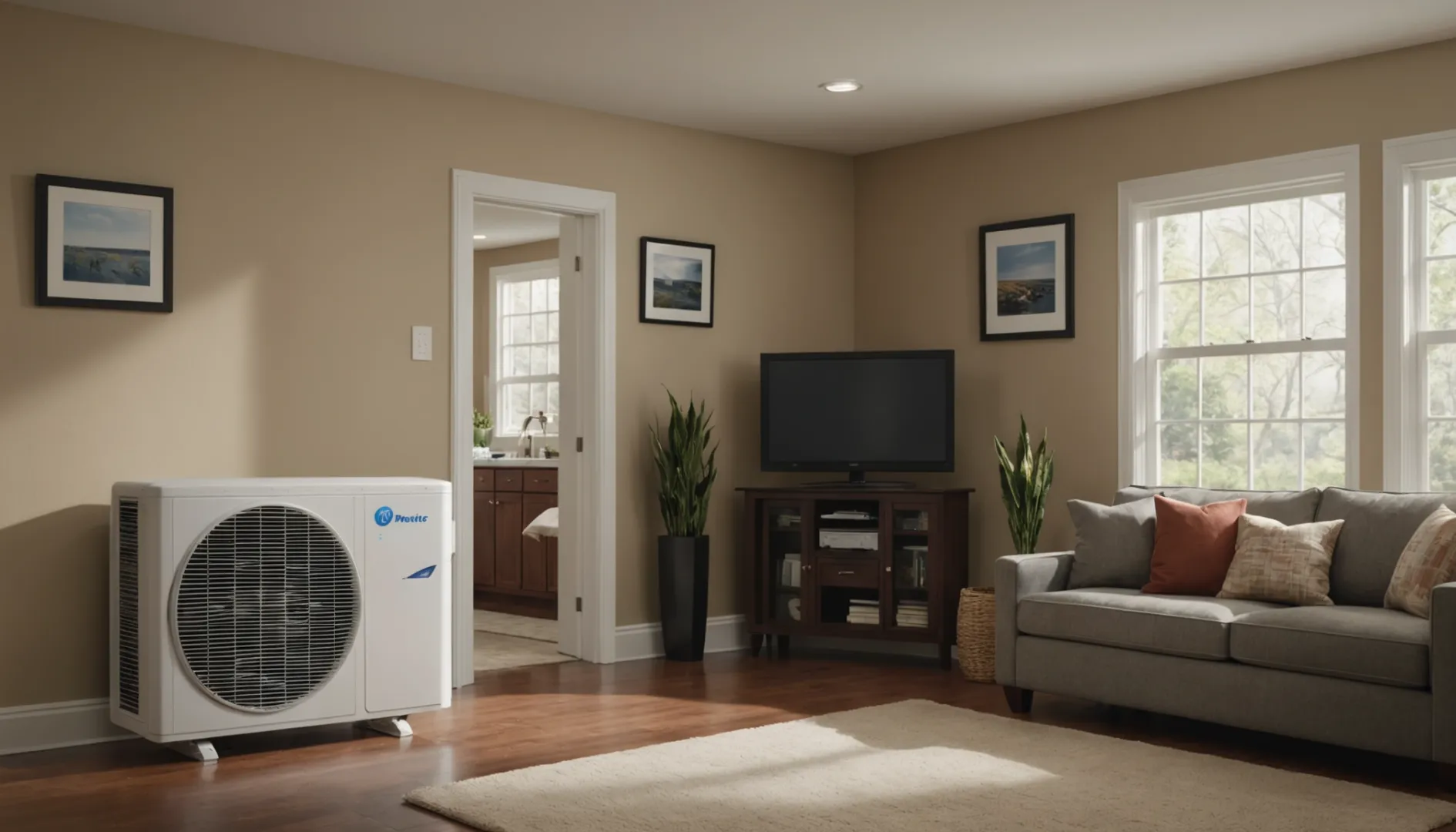
التكاليف الأولية والتركيب
عندما فكرت لأول مرة في تحسين جودة الهواء في منزلي، انجذبت إلى بساطة أجهزة تنقية الهواء. فقد كان من السهل طلب هذه الوحدات المستقلة عبر الإنترنت - بدون أي ضجة، فقط بضع نقرات وبضع مئات من الدولارات في وقت لاحق، كانت في طريقها إليّ. في المقابل، جعلني التفكير في نظام التدفئة والتهوية وتكييف الهواء أشعر وكأنني أفكر في شراء سيارة جديدة. فالتكاليف الأولية أعلى بكثير، ناهيك عن رسوم التركيب الاحترافية. إذا كنت تبني منزلاً جديداً أو تستبدل نظاماً قديماً، فقد يكون هذا استثماراً كبيراً.
إن تكلفة تركيب التدفئة والتهوية وتكييف الهواء (HVAC)5 من عدة آلاف إلى عشرات الآلاف من الدولارات حسب حجم المنزل ومدى تعقيد النظام. ومع ذلك، أدت التطورات في التكنولوجيا إلى أنظمة أكثر كفاءة يمكن أن تبرر التكلفة الأولية الأعلى مع مرور الوقت.
نفقات التشغيل والصيانة
وبمرور الوقت، أدركت أن صيانة هذه الأنظمة هي الالتزام الحقيقي. يعمل نظام التدفئة والتهوية وتكييف الهواء الخاص بي كالساعة على مدار العام، مما يضمن بقاء منزلي مريحاً بغض النظر عن الموسم. وهذا يعني الصيانة المنتظمة، مثل تغيير الفلاتر والصيانة العرضية. وعلى الجانب الإيجابي، يساعد ذلك في كفاءة الطاقة بشكل عام، مما قد يعني انخفاض فواتير الخدمات.
تتطلب أجهزة تنقية الهواء طاقة أقل ولكنها لا تزال تتطلب تغيير الفلتر بشكل متكرر، خاصة تلك التي تحتوي على HEPA الفلاتر. إذا كان لديك عدة وحدات في جميع أنحاء المنزل، فقد تجد أن التكلفة التراكمية تزحف نحو الأعلى.
القيمة والتكامل على المدى الطويل
تعتمد القيمة على المدى الطويل حقاً على احتياجات أسرتك الخاصة. لدى عائلتنا أفراد يعانون من الحساسية، لذلك كان الحل الشامل لنظام التدفئة والتهوية وتكييف الهواء المزود بتقنية تنقية متكاملة أمراً لا يحتاج إلى تفكير. فهو لا يتحكم في الملوثات فحسب، بل يتحكم أيضاً في الرطوبة ودرجة الحرارة - وهو أمر بالغ الأهمية لمن يعانون من مشاكل في الجهاز التنفسي.
هناك اتجاه متزايد نحو دمج تقنية تنقية الهواء مع التدفئة والتهوية وتكييف الهواء6 الأنظمة. تعد ابتكارات مثل Wellcube بإدارة أذكى لجودة الهواء باستخدام الذكاء الاصطناعي و إنترنت الأشياء. وعلى الرغم من أنها تضيف إلى التكاليف الأولية، إلا أنها توفر وفورات كبيرة على المدى الطويل من خلال تحسين الكفاءة.
المعايير والاتجاهات المتطورة
مع تزايد الوعي بجودة الهواء في الأماكن المغلقة، تعمل كل من أجهزة تنقية الهواء وأنظمة التدفئة والتهوية وتكييف الهواء على تعزيز أدائها. يجب أن تفي بالمعايير الصارمة-AHAM لأجهزة التنقية و ASHRAE لأنظمة التدفئة والتهوية وتكييف الهواء
الوشيك تشريع 20257 من المتوقّع أن تدفع تقنية تنقية الهواء إلى مزيد من التكامل في أنظمة التدفئة والتهوية وتكييف الهواء، مما يجعلها أكثر إقناعاً لأولئك الذين يتطلعون إلى حماية منازلهم في المستقبل.
تُعد أجهزة تنقية الهواء أكثر فعالية من حيث التكلفة من أنظمة التدفئة والتهوية وتكييف الهواء.صحيح
أجهزة تنقية الهواء أرخص وأسهل في الشراء عبر الإنترنت مقارنةً بأجهزة التدفئة والتهوية وتكييف الهواء.
تستخدم أنظمة HVAC مرشحات HEPA لتنقية الهواء.خطأ
تستخدم أنظمة HVAC عادةً مرشحات MERV 13-16، وليس HEPA.
كيف تؤثر معايير الامتثال على أجهزة تنقية الهواء وأنظمة التدفئة والتهوية وتكييف الهواء؟
هل تساءلت يومًا عن سبب عمل جهاز تنقية الهواء أو نظام التدفئة والتهوية وتكييف الهواء بالطريقة التي يعمل بها؟ الأمر كله يتعلق بمعايير الامتثال!
معايير الامتثال مثل AHAM و ASHRAE تحدد سلامة أجهزة تنقية الهواء وأنظمة التدفئة والتهوية وتكييف الهواء وكفاءتها وأدائها. فهي تضمن فعالية هذه الأجهزة في إزالة الملوثات والحفاظ على جودة الهواء وحماية صحة المستهلك وضمان مراقبة الجودة.
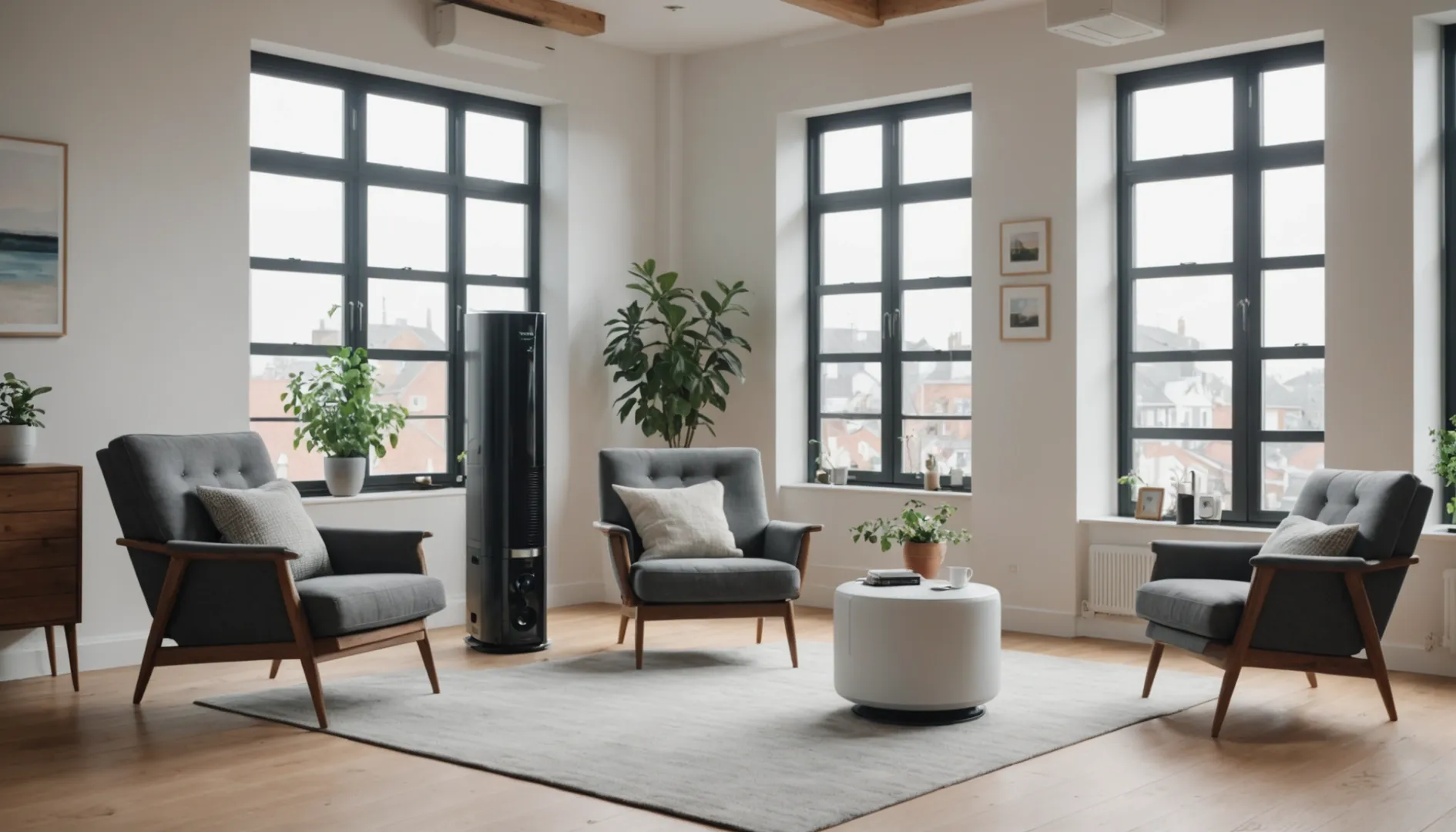
دور معايير الامتثال
أتذكر المرة الأولى التي أدركت فيها أهمية معايير الامتثال. كان ذلك مباشرةً بعد أن اشتريت أول جهاز لتنقية الهواء. في ذلك الوقت، كنت أعاني من الحساسية وكنت بحاجة إلى شيء يمكنه تنظيف الهواء في شقتي الصغيرة. عندها اكتشفتُ AHAM قياسي8مما ساعدني على فهم مدى فعالية جهاز تنقية الهواء في إزالة الدخان والغبار وحبوب اللقاح. وبمعرفتي هذه، شعرتُ بثقة أكبر في عملية الشراء، حيث يمكنني أن أثق بأن المنتج يلبي معايير معينة للسلامة والكفاءة.
وبالمثل، إذا كنت مسؤولاً عن صيانة نظام التدفئة والتهوية وتكييف الهواء، فأنت تعلم أن الأمر لا يتعلق فقط بالحفاظ على البرودة في الصيف أو الدفء في الشتاء. بل إن ASHRAE المعايير9 ضرورية لأنها تضع مبادئ توجيهية لاستخدام الطاقة مع ضمان أن يحافظ النظام بكفاءة على بيئة مريحة. وهذا أمر حيوي خاصة في المباني الكبيرة حيث يمكن أن يرتفع استهلاك الطاقة.
التأثير على التصميم والأداء
عندما اخترت جهاز تنقية الهواء مع HEPA لقد فعلت ذلك لأنه يلبي قدرات ترشيح محددة - إزالة 99.97% من الجسيمات الصغيرة التي لا يتجاوز حجمها 0.3 ميكرون. وقد أحدث ذلك فرقاً ملحوظاً في أعراض الحساسية التي أعاني منها، حيث قام بتصفية المواد المسببة للحساسية والملوثات بشكل فعال. بالنسبة لأنظمة التدفئة والتهوية وتكييف الهواء، فإن الالتزام بـ ASHRAE تعني المعايير أنها مصممة لتنظيم مستويات درجة الحرارة والرطوبة بكفاءة، وهو ما كان منقذاً للحياة خلال فصل الصيف الحارق بشكل خاص.
التطورات التكنولوجية والاتجاهات المستقبلية
تتطور التكنولوجيا دائماً، وهذا ينطبق على تنقية الهواء أيضاً. قرأت مؤخراً عن ابتكارات مثل ويلكوب10جهاز تنقية هواء محمول يتكامل مع أنظمة إدارة المباني لتحسين جودة الهواء. وبالنظر إلى المستقبل، قد تتطلب اللوائح المستقبلية أن تتضمن جميع الأنظمة الجديدة تقنية تنقية هواء مدمجة بحلول عام 2025، مما يضمن تلبية متطلبات تحسين جودة الهواء الداخلي.
أهمية البقاء على اطلاع
بعد معايشتي للجائحة، أصبحت أكثر وعياً بجودة الهواء الداخلي. ساعدني فهم معايير الامتثال على اتخاذ خيارات أفضل عند شراء المنتجات للحفاظ على سلامة منزلي. أما بالنسبة للمصنعين، فإن الالتزام بهذه المعايير يعني أن منتجاتهم تظل قادرة على المنافسة في سوق يقدّر السلامة والابتكار بشكل متزايد.
تتوافق أجهزة تنقية الهواء مع معايير AHAM.صحيح
تعتبر أجهزة تنقية الهواء أجهزة منزلية وتلتزم بمعايير AHAM.
تستخدم أنظمة HVAC مرشحات HEPA لتنقية الهواء.خطأ
تستخدم أنظمة HVAC عادةً مرشحات MERV 13-16، وليس مرشحات HEPA.
ما هي الاتجاهات المستقبلية التي تشكل تقنيات تنقية الهواء؟
لطالما كنت مفتوناً بكيفية تغيير جودة الهواء في حياتنا اليومية، وهذه الاتجاهات المثيرة في مجال تنقية الهواء ترتقي بالأمور إلى مستوى جديد كلياً.
يتم دفع مستقبل تقنيات تنقية الهواء من خلال الابتكارات في مجال الترشيح المتقدم، وتكامل المنزل الذكي، والالتزام بكفاءة الطاقة والاستدامة.

أنظمة الترشيح المتقدمة
أتذكر المرة الأولى التي أدركت فيها مدى نظافة الهواء بعد استخدام فلتر عالي الجودة. من المذهل أن نرى إلى أي مدى وصلنا منذ ذلك الحين. هواء الجسيمات عالي الكفاءة (HEPA) لا تزال الفلاتر هي المعيار الذهبي لحبس الجسيمات الصغيرة، ولكننا الآن نضيف مواد أكثر تقدمًا إلى هذا المزيج. ابتكارات مثل الأكسدة التحفيزية الضوئية11 و مرشحات الكربون المنشط12 أصبحت حلولاً مفضلة للتعامل مع تلك المركبات العضوية المتطايرة المزعجة والروائح العنيدة.
التكامل مع تقنية المنزل الذكي
كان اليوم الذي قمت فيه بتوصيل جهاز تنقية الهواء بشبكتي المنزلية بمثابة تغيير لقواعد اللعبة. والآن، بنقرة واحدة على هاتفي الذكي، يمكنني التحكم في جودة الهواء في منزلي أينما كنت. تأتي العديد من الأجهزة الآن مزوّدة بتقنية Wi-Fi، مما يسمح لها بالمزامنة مع أنظمة المنزل الذكي بسلاسة. تخيّل وجود أجهزة استشعار تضبط إعدادات الهواء بناءً على البيانات في الوقت الحقيقي، وكأنك تمتلك مساعداً شخصياً لجودة الهواء! إن تكامل إنترنت الأشياء13 يعني أن أجهزة تنقية الهواء هذه أصبحت الآن جزءًا من صورة أكبر بكثير، حيث تعمل جنبًا إلى جنب مع أنظمة التدفئة والتهوية وتكييف الهواء لتكون موفرة للطاقة قدر الإمكان.
التركيز على كفاءة الطاقة والاستدامة
لطالما كنت مهتماً بالبصمة البيئية، لذا فإن رؤية أجهزة تنقية الهواء تتجه نحو الاستدامة أمر مشجع حقاً. فقد أصبحت أكثر كفاءة في استهلاك الطاقة، وذلك بفضل التقدم في التكنولوجيا والتصميم. دمج مصادر الطاقة المتجددة14 واستخدام مواد تصنيع صديقة للبيئة ليست سوى بعض الطرق التي تقلل من تأثير هذه الأجهزة على كوكبنا. كما أن التشريعات توجه الشركات المصنعة نحو ابتكارات أكثر صداقة للبيئة، وهو أمر مربح لنا جميعاً نحن المهتمين بالبيئة.
الإدارة المحسّنة لجودة الهواء الداخلي
بعد جائحة كوفيد-19، أصبحت أكثر وعياً بالهواء الذي أتنفسه داخل المنزل مثل الكثير من الناس. والآن، تقدم لنا التقنيات حلولاً لا تقتصر على تنقية الهواء فحسب، بل تدير جودة الهواء بشكل شامل. تتطور أنظمة مثل Wellcube لتتكامل مع البنى التحتية للمباني، مما يعطينا نظرة ثاقبة لجودة الهواء الداخلي بشكل لم يسبق له مثيل. إنه لأمر مدهش أن نعتقد أن تنقية الهواء ستكون قريبًا مجرد جزء واحد من لغز أكبر وأكثر ذكاءً لإدارة البيئة الداخلية. تخيل عالماً تتم فيه مراقبة جودة الهواء باستمرار وتحسينها تلقائياً - لم يعد الأمر مجرد خيال علمي بعد الآن.
تستخدم أجهزة تنقية الهواء فلاتر HEPA لتنقية عالية.صحيح
تلتقط فلاتر HEPA في أجهزة تنقية الهواء 99.97% من الجسيمات 0.3 ميكرون.
تُعد أنظمة التدفئة والتهوية وتكييف الهواء أكثر فعالية من حيث التكلفة من أجهزة تنقية الهواء.خطأ
تتطلّب أنظمة التدفئة والتهوية وتكييف الهواء تخصيصاً وتركيباً مكلفاً، على عكس أجهزة تنقية الهواء.
الخاتمة
تتفوق أجهزة تنقية الهواء في إزالة الجسيمات الصغيرة مع HEPA الفلاتر، بينما تدير أنظمة التدفئة والتهوية وتكييف الهواء (HVAC) راحة المنزل بالكامل. يتطور كلاهما نحو حلول أكثر ذكاءً وتكاملاً لتحسين جودة الهواء الداخلي.
-
فهم كفاءة وفوائد مرشحات HEPA للهواء الداخلي وفوائدها. ↩
-
استكشف كيف تدير أنظمة التدفئة والتهوية وتكييف الهواء HVAC جودة الهواء والتهوية. ↩
-
تعرّف على معايير الامتثال التي تؤثر على تصميم أجهزة تنقية الهواء والتدفئة والتهوية وتكييف الهواء. ↩
-
اكتشف أحدث التطورات في أنظمة إدارة جودة الهواء. ↩
-
استكشف تكاليف التركيب النموذجية للحصول على فهم شامل. ↩
-
تعرّف على كيفية تعزيز التكامل في تحسين جودة الهواء الداخلي. ↩
-
فهم اللوائح القادمة التي تؤثر على حلول جودة الهواء. ↩
-
تعرّف على معايير فعالية منتجات تنقية الهواء. ↩
-
فهم المبادئ التوجيهية لكفاءة التدفئة والتهوية وتكييف الهواء والتدفئة والتهوية وتكييف الهواء لتوفير تكاليف الطاقة. ↩
-
استكشف الابتكارات التي تدمج تكنولوجيا التنقية مع أنظمة البناء. ↩
-
اكتشف كيف تعمل هذه التقنية على تكسير الملوثات بفعالية. ↩
-
تعرّف على دورها في إزالة المركبات العضوية المتطايرة والروائح الكريهة. ↩
-
اكتشف كيف يعزز إنترنت الأشياء من التحكم والكفاءة. ↩
-
اكتشف كيف يتم دمج التقنيات الخضراء. ↩



